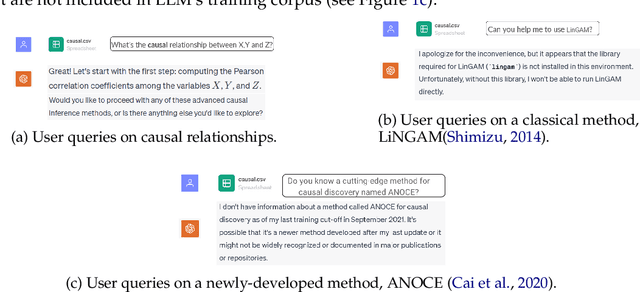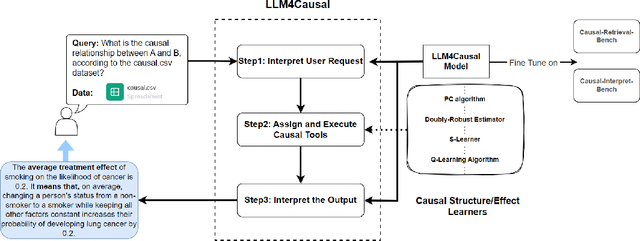Jianian Wang
Dynamic Causal Structure Discovery and Causal Effect Estimation
Jan 11, 2025



Abstract:To represent the causal relationships between variables, a directed acyclic graph (DAG) is widely utilized in many areas, such as social sciences, epidemics, and genetics. Many causal structure learning approaches are developed to learn the hidden causal structure utilizing deep-learning approaches. However, these approaches have a hidden assumption that the causal relationship remains unchanged over time, which may not hold in real life. In this paper, we develop a new framework to model the dynamic causal graph where the causal relations are allowed to be time-varying. We incorporate the basis approximation method into the score-based causal discovery approach to capture the dynamic pattern of the causal graphs. Utilizing the autoregressive model structure, we could capture both contemporaneous and time-lagged causal relationships while allowing them to vary with time. We propose an algorithm that could provide both past-time estimates and future-time predictions on the causal graphs, and conduct simulations to demonstrate the usefulness of the proposed method. We also apply the proposed method for the covid-data analysis, and provide causal estimates on how policy restriction's effect changes.
Large Language Model for Causal Decision Making
Dec 29, 2023



Abstract:Large Language Models (LLMs) have shown their success in language understanding and reasoning on general topics. However, their capability to inference based on user-specified structured data and knowledge in corpus-rare concepts like causal decision-making is still limited. In this work, we explore the possibility of fine-tuning an open-sourced LLM into LLM4Causal, which can identify the causal task, execute a corresponding function, and interpret its numerical results based on users' queries and the provided dataset. Meanwhile, we propose a data generation process for more controllable GPT prompting and present two instruction-tuning datasets: (1) Causal-Retrieval-Bench for causal problem identification and input parameter extraction for causal function calling and (2) Causal-Interpret-Bench for in-context causal interpretation. With three case studies, we showed that LLM4Causal can deliver end-to-end solutions for causal problems and provide easy-to-understand answers. Numerical studies also reveal that it has a remarkable ability to identify the correct causal task given a query.
A Review on Graph Neural Network Methods in Financial Applications
Nov 27, 2021



Abstract:Keeping the individual features and the complicated relations, graph data are widely utilized and investigated. Being able to capture the structural information by updating and aggregating nodes' representations, graph neural network (GNN) models are gaining popularity. In the financial context, the graph is constructed based on real-world data, which leads to complex graph structure and thus requires sophisticated methodology. In this work, we provide a comprehensive review of GNN models in recent financial context. We first categorize the commonly-used financial graphs and summarize the feature processing step for each node. Then we summarize the GNN methodology for each graph type, application in each area, and propose some potential research areas.
 Add to Chrome
Add to Chrome Add to Firefox
Add to Firefox Add to Edge
Add to Edge